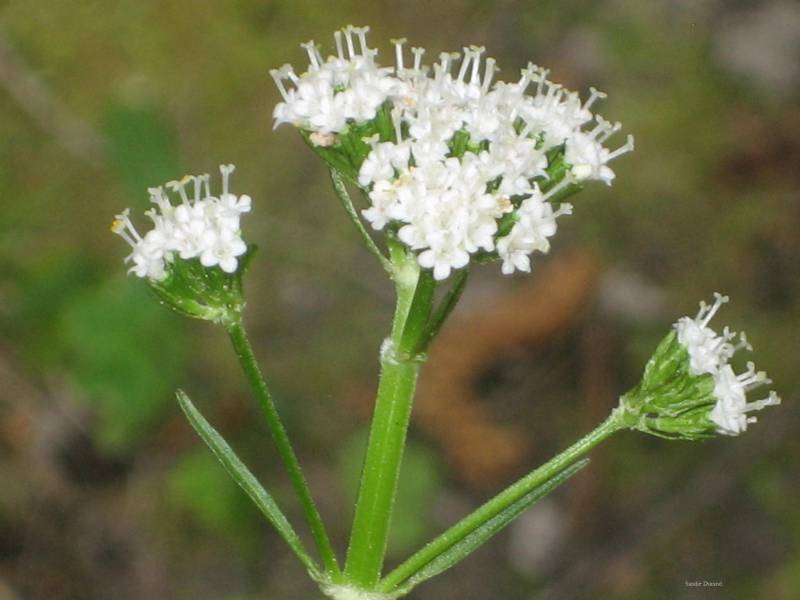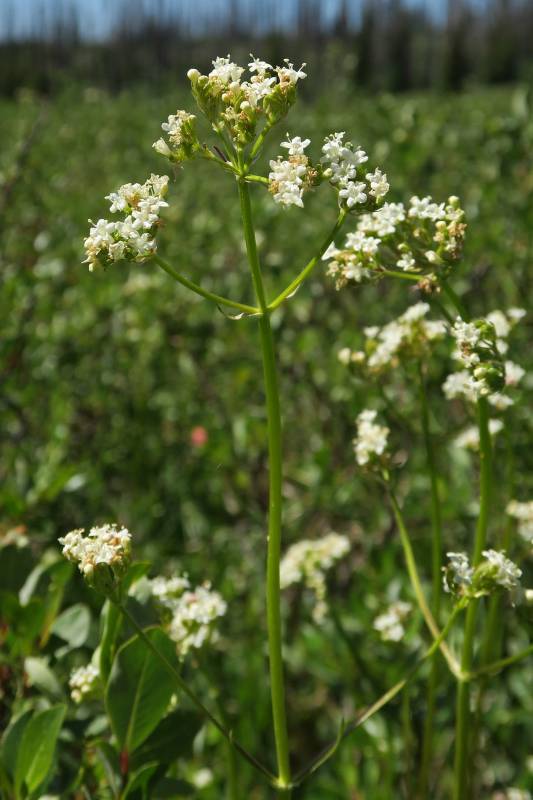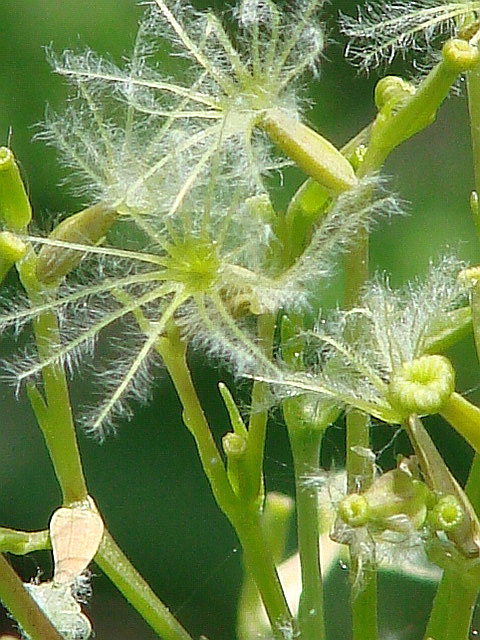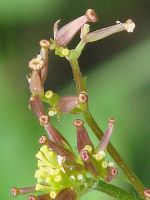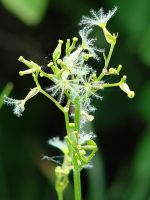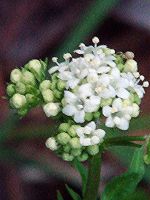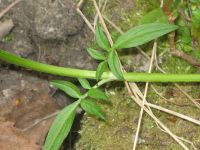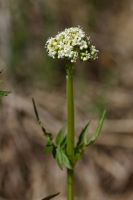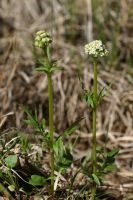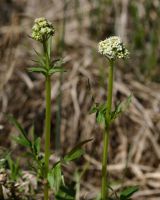Distribution: Occurring east of the Cascades crest in northeastern Washington; Alaska to northern Washington and eastern Oregon, east to central Idaho and northwest Montana; circumboreal.
Habitat: Moist places in the mountains, often in wet meadows.
Flowers: May-July
Origin: Native
Growth Duration: Perennial
Conservation Status: Not of concern
Pollination: Bees, flies, sawflies
Fibrous-rooted perennial from a stout, branched rhizome, the unbranched stem glabrous, 1-4 dm. tall; some plants have perfect flowers, others have only pistillate flowers.
Basal leaves well-developed, petiolate, the blade up to 8 cm. long and 3 cm. wide, mostly undivided; cauline leaves opposite, 2-4 pairs, sub-sessile, pinnatifid, the terminal lobe ovate-oblong or narrower, up to 5 cm. long and 2.5 cm. wide, the 1-7 pairs of lateral lobes smaller, under 1 cm. wide.
Inflorescence compact, 1.5-3 cm. wide, elongating in fruit; calyx enlarging and spreading, with 9-15 plumose, bristle-like segments; corolla united, white, 2-4 mm. long, the 5 lobes about equal to the tube; stamens 3, well exerted; ovary inferior, with two of the three cells vestigial.
Inflorescence compact, 1.5-3 cm. wide, elongating in fruit; calyx enlarging and spreading, with 9-15 plumose, bristle-like segments; corolla united, white, 2-4 mm. long, the 5 lobes about equal to the tube; stamens 3, well exerted; ovary inferior, with two of the three cells vestigial.
Publication: Sp. Pl. 1: 31. 1753.
-
var. sylvatica – northern valerian
 Occurring east of the Cascades crest in northeastern Washington; Alaska to northern Washington and eastern Oregon, east to central Idaho and northwest Montana; circumboreal.
Occurring east of the Cascades crest in northeastern Washington; Alaska to northern Washington and eastern Oregon, east to central Idaho and northwest Montana; circumboreal.
PNW Herbaria: Specimen records of Valeriana dioica in the Consortium of Pacific Northwest Herbaria database
WA Flora Checklist: Valeriana dioica checklist entry
OregonFlora: Valeriana dioica information
E-Flora BC: Valeriana dioica atlas page
CalPhotos: Valeriana dioica photos

